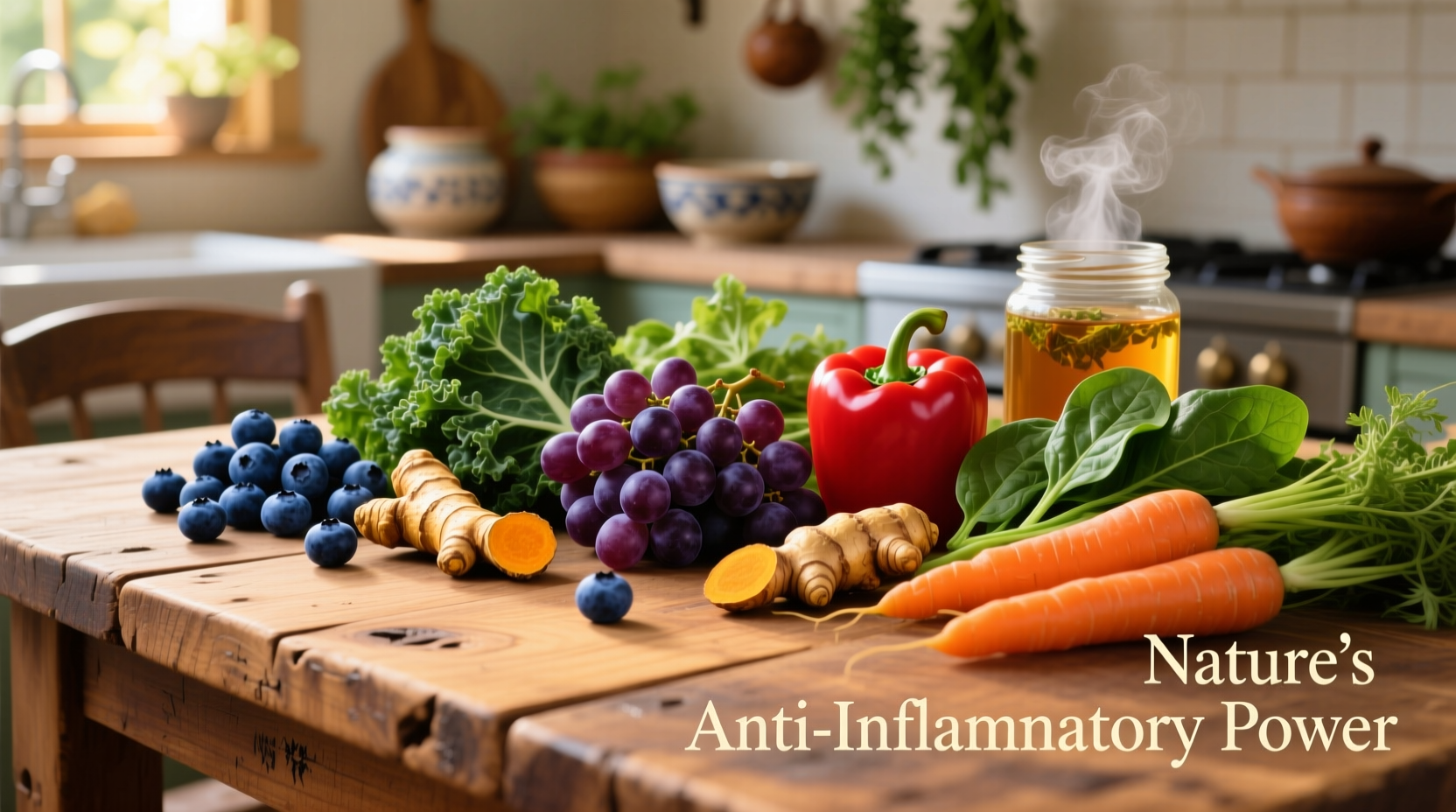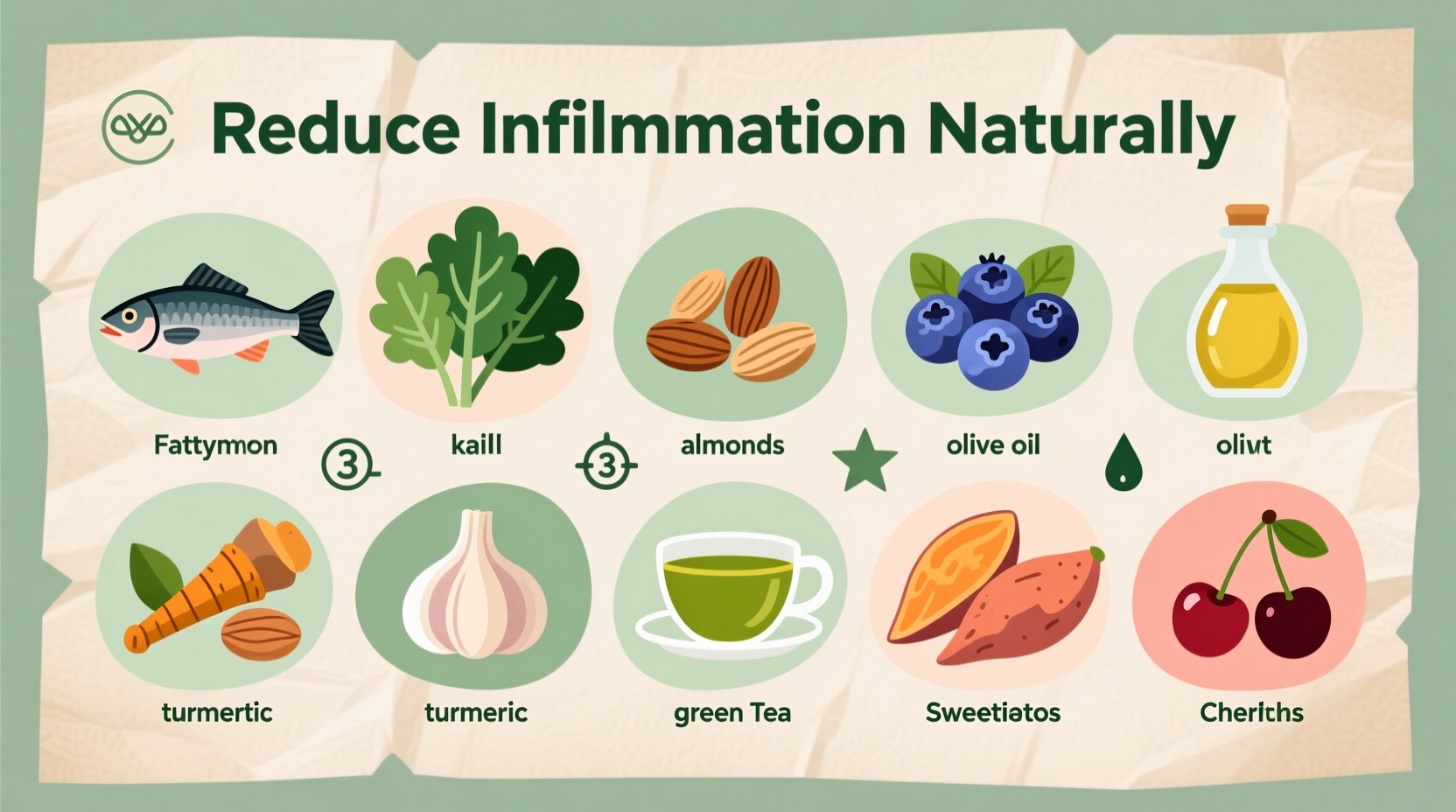Chronic inflammation silently contributes to heart disease, arthritis, diabetes, and even cognitive decline. The good news? Your kitchen contains potent natural solutions. Research shows that consistent consumption of specific anti-inflammatory foods can lower C-reactive protein (CRP) levels by 20-30% within months, providing measurable protection against inflammation-related conditions. Unlike pharmaceutical approaches that often target symptoms, these foods address inflammation at its source through multiple biological pathways.
Why Food Matters in the Inflammation Battle
Inflammation is your body's natural defense mechanism, but when it becomes chronic due to poor diet, stress, or environmental factors, it damages healthy tissues. The Western diet—high in processed foods, sugar, and unhealthy fats—fuels this destructive process. Conversely, an anti-inflammatory diet rich in phytonutrients and omega-3 fatty acids modulates your immune response, reducing inflammatory markers like interleukin-6 and tumor necrosis factor-alpha.
According to a National Institutes of Health review of 200+ studies, dietary patterns emphasizing whole plant foods and omega-3 sources demonstrate significant anti-inflammatory effects comparable to some medications, but without adverse side effects. This isn't about quick fixes—it's about creating sustainable eating habits that reprogram your body's inflammatory response.

Science-Backed Anti-Inflammatory Powerhouses
Not all "anti-inflammatory" foods deliver equal benefits. These categories represent the most clinically validated options based on current research:
Fatty Fish and Omega-3 Sources
Fatty fish like salmon, mackerel, and sardines provide EPA and DHA—omega-3 fatty acids that directly inhibit inflammatory pathways. A American Heart Association study found that consuming fatty fish twice weekly reduced CRP levels by 22% in participants with elevated inflammation. For vegetarians, chia seeds, flaxseeds, and walnuts offer plant-based ALA omega-3s that convert to active anti-inflammatory compounds.
Colorful Berries and Anthocyanin-Rich Fruits
Blueberries, strawberries, and blackberries contain anthocyanins that suppress inflammatory enzymes. Research published in the American Journal of Clinical Nutrition demonstrated that daily berry consumption reduced inflammatory markers by 15-20% in overweight adults within six weeks. Tart cherries show particular promise for exercise-induced inflammation, with studies showing 50% less muscle soreness in athletes who consumed tart cherry juice.
| Anti-Inflammatory Food | Key Compound | Minimum Effective Daily Amount | Time to Notice Effects |
|---|---|---|---|
| Fatty fish (salmon, mackerel) | EPA/DHA omega-3s | 3.5 oz (twice weekly) | 8-12 weeks |
| Turmeric (with black pepper) | Curcumin | 1/2 tsp (500mg) | 4-6 weeks |
| Extra virgin olive oil | Oleocanthal | 2 tbsp | 6-8 weeks |
| Walnuts | ALA omega-3s | 1 oz (14 halves) | 10-12 weeks |
Implementation Guide: Building Your Anti-Inflammatory Plate
Knowing which foods help is only half the battle—you need practical strategies for incorporating them consistently:
Smart Swaps for Common Inflammatory Foods
- Replace vegetable oils (soybean, corn) with extra virgin olive oil for dressings and low-heat cooking
- Substitute white rice with quinoa or wild rice blends containing anti-inflammatory spices
- Choose dark chocolate (70%+ cacao) instead of milk chocolate for antioxidant benefits
- Swap sugary breakfast cereals for oatmeal topped with berries and walnuts
Maximizing Bioavailability: Getting the Most from Your Foods
How you prepare anti-inflammatory foods dramatically impacts their effectiveness:
- Turmeric: Always combine with black pepper (piperine increases curcumin absorption by 2,000%) and healthy fat
- Tomatoes: Cook with olive oil to increase lycopene bioavailability by 2.5x
- Green tea: Add lemon to stabilize EGCG (the key anti-inflammatory compound)
- Garlic: Crush and let sit for 10 minutes before cooking to activate allicin
Context Matters: When Diet Alone Isn't Enough
While food is powerful, it's essential to recognize the boundaries of dietary intervention:
- Acute inflammation from injuries requires immediate medical attention—food supports but doesn't replace emergency care
- Autoimmune conditions often need medication alongside dietary changes
- Genetic factors influence individual responses to anti-inflammatory foods
- Severe vitamin D deficiency can negate anti-inflammatory diet benefits
The Mayo Clinic emphasizes that for conditions like rheumatoid arthritis, an anti-inflammatory diet should complement—not replace—medical treatment. Think of food as your foundational support system that enhances other therapies' effectiveness.
7-Day Anti-Inflammatory Meal Plan Template
This practical template rotates key anti-inflammatory foods while ensuring variety:
Breakfast Rotation
- Monday/Wednesday/Friday: Oatmeal with walnuts, blueberries, and chia seeds
- Tuesday/Thursday: Scrambled eggs with spinach, tomatoes, and turmeric
- Weekend: Smoothie with kale, avocado, ginger, and flaxseed
Lunch Rotation
- Salmon salad with mixed greens, olive oil dressing, and avocado
- Quinoa bowl with black beans, roasted vegetables, and tahini dressing
- Lentil soup with turmeric, carrots, and kale
Dinner Rotation
- Baked mackerel with roasted broccoli and sweet potatoes
- Chickpea curry with spinach and brown rice
- Grilled chicken with asparagus and cherry tomatoes
Debunking Common Anti-Inflammatory Diet Myths
Navigating nutrition advice requires discernment. These misconceptions persist despite evidence:
- Myth: All fats cause inflammation Truth: Monounsaturated and omega-3 fats actively reduce inflammation while trans fats and excess omega-6 promote it
- Myth: You need expensive "superfoods" for anti-inflammatory benefits Truth: Common foods like onions, garlic, and carrots contain potent anti-inflammatory compounds
- Myth: Anti-inflammatory diets require eliminating entire food groups Truth: Sustainable approaches focus on adding beneficial foods rather than restrictive elimination
Remember that inflammation is complex—no single food is a magic bullet. The cumulative effect of consistent dietary patterns creates meaningful change. As Harvard researchers note, "It's the symphony of compounds working together that delivers the greatest anti-inflammatory benefit, not any single nutrient in isolation."











 浙公网安备
33010002000092号
浙公网安备
33010002000092号 浙B2-20120091-4
浙B2-20120091-4